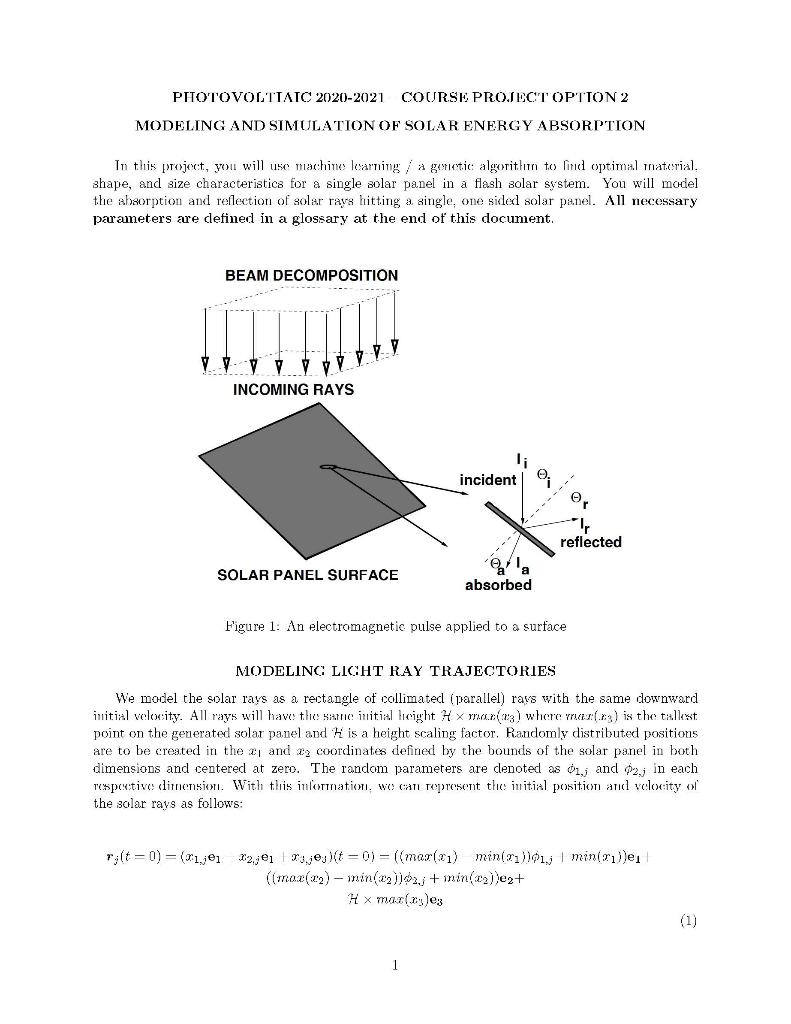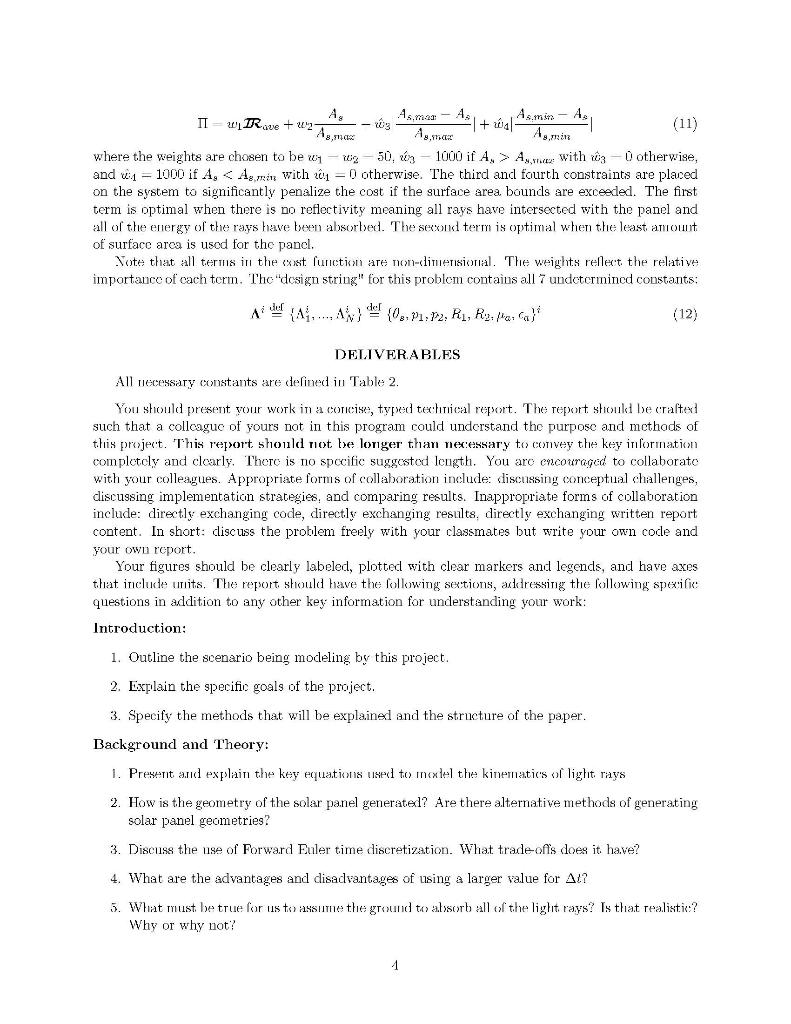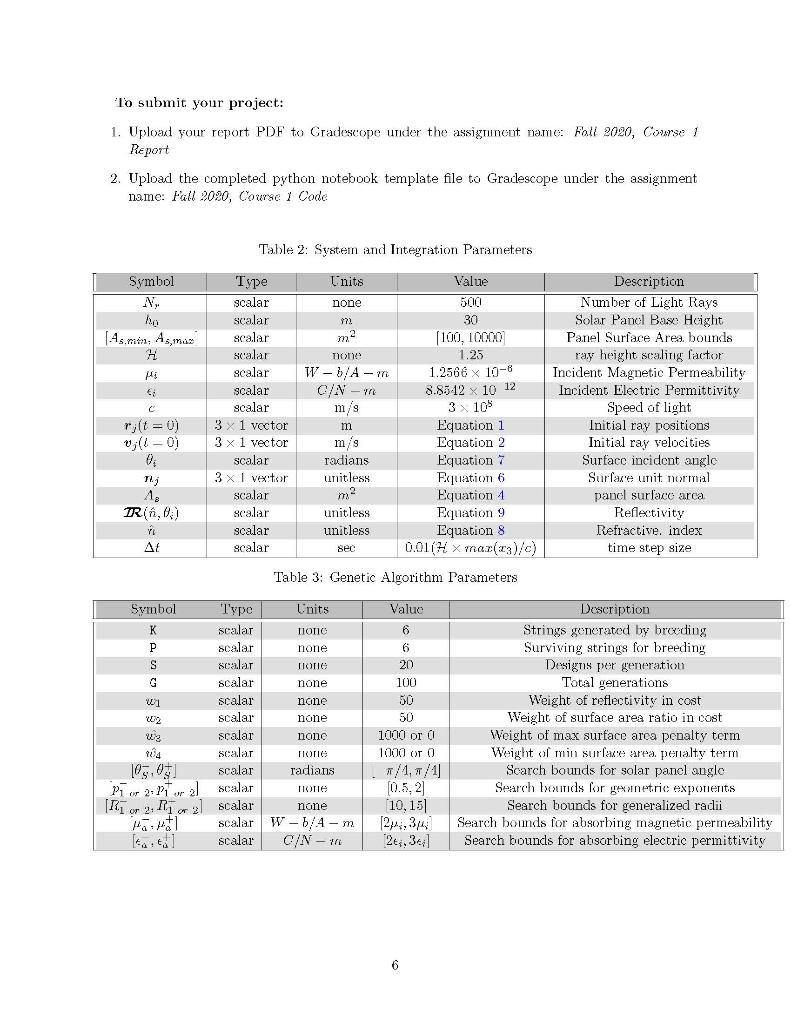python project






PHOTOVOLTTAIC 2020-2021 COURSE PROJECT OPTION 2 MODELING AND SIMULATION OF SOLAR ENERGY ABSORPTION In this project, you will use machine learning / a genetic algorithun to find optimal material, shape, and size characteristics for a single solar panel in a flash solar system. You will model the absorption and reflection of solar rays hitting a single, one sided solar panel. All necessary parameters are defined in a glossary at the end of this document. BEAM DECOMPOSITION VTT INCOMING RAYS incident reflected SOLAR PANEL SURFACE absorbed Figure 1: An electromagnetic pulse applied to a surface MODELING LIGHT RAY TRAJECTORIES We model the solar rays as a rectangle of collimated (parallel) rays with the same downward initial velocity. All rays will have the same initial light H x mar3) where yurf.n) is the tallest point on the generated solar panel and His a height scaling factor. Randomly distributed positions are to be created in the x, and a coordinates defined by the bounds of the solar panel in both dimensions and centered at zero. The random parameters are denoted as 01,j and 02.; in each respektive dimension. With this information, we can represent the initial position and cloxity on the solar rays as follows: r;(t = 0) = (T1je 32.jerujes/t = 0) = ((mar(1) min()01.j | minimule, ((max(29) - min(262.j + min(29))e2+ H x manyes 1 v;(t-0) --ves, where u is the speed of light in the ambient medium. We will approximate the surrounding mnelium as a vacuum and use v=ca3X10m/s. To model each ray's trajectory, use Forward Euler time stepping to move the rays down to the surface where they will absorb and reflect. The procedure to follow is: 1. Initialize ray positions and velexities rzt=0), 10;(t = 0), time t = 0, etc. 2. While not all rays have not intersected with a surface: Check for intersection with solar panel or ground, calculate absorptive and reflective rate. Increment ray positions: r;(l+AI) - 7; (4) + Alv;((). 3. Increment time forward: (=t+A CREATING SOLAR PANEL GEOMETRIES We are given surface functions for the solar panel f'(x1,xa) at a constant angle (, and at a minimum base height of ho. The ground is assumed to be lat at a exstant height 13 = 0, We can chock for intersections with cither object by chocking if the third component of r; is less than F(*1,72) or less than 0, using the first two components 71, 22 of the ray position to compute the absorptivity and reflectively of that beam. For this simple model, we assume that every beam will only contact each surface once. As such, we assume the ground will absorb 100% of the rays that touch it. Also, we are not concerned with rays once that have intersected with a surface, meaning we will not compute reflected angle directions and velocitites, though this may be an area of interest for expansion of this project. We can use a generalized equation for an ellipsoid to represent the geometry of our solar panel: F(x1,29
A with 3-0 otherwise, and w1 = 1000 if A, A with 3-0 otherwise, and w1 = 1000 if A,












